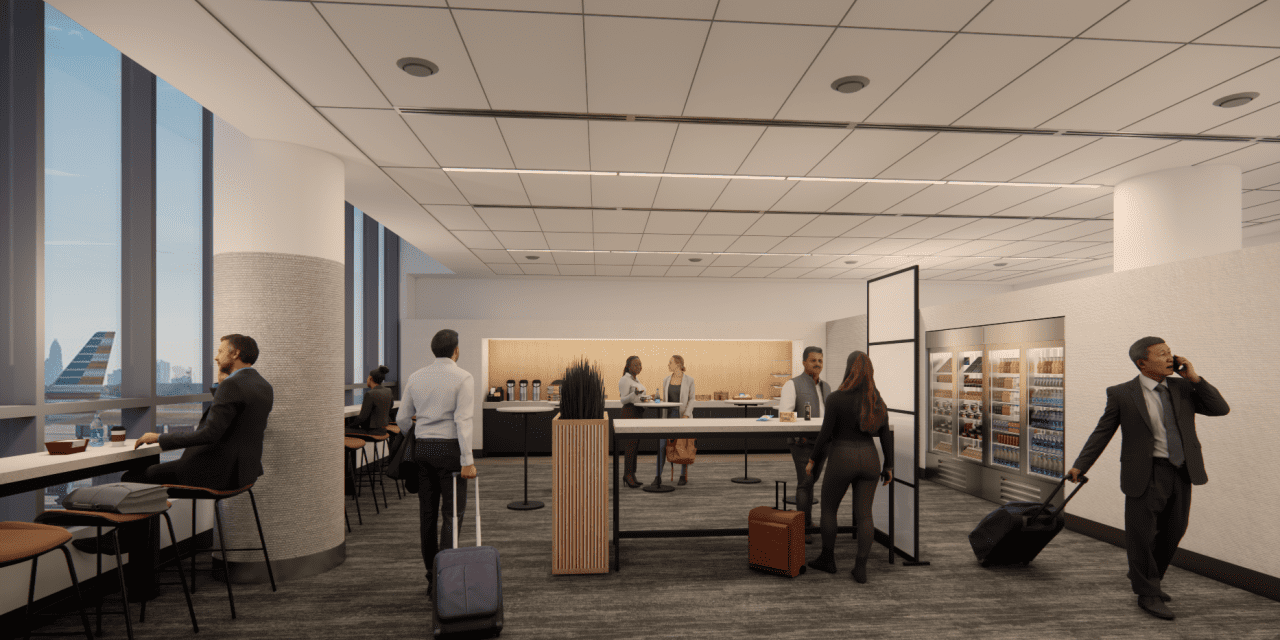The Rise of Compact Airport Lounges
In a move that mirrors the convenience of travel-sized toiletries, airport lounges are evolving to meet the needs of modern travelers. American Express and American Airlines have both unveiled plans for smaller, more streamlined lounge concepts. These new spaces are designed for travelers seeking a quick respite rather than an extended stay, offering a more efficient alternative to traditional lounges.
American Airlines has introduced its new concept calledProvisions by Admirals Club, which will launch later this summer at Charlotte Douglas International Airport. According to the airline, the space is “designed for speed, simplicity and convenience.” The lounge will occupy 2,000 square feet, significantly smaller than the standard Admirals Club lounges at the same airport, which measure 4,500 square feet and 23,300 square feet respectively. While American Airlines operates nearly 50 Admirals Club lounges globally, each varies in size, indicating a flexible approach to lounge design.
Similarly, American Express is set to debut itsSidecar by The Centurion Loungein 2026 at Las Vegas’s Harry Reid International Airport. This new concept is tailored for travelers with limited time, aiming to provide a quick bite or drink before boarding. Although specific details about the size of the Sidecar lounge compared to the standard Centurion Lounges were not disclosed, the design is described as “speakeasy-inspired,” emphasizing a more intimate and efficient experience.
Addressing the Challenges of Traditional Lounges
The introduction of these compact lounges comes in response to growing challenges faced by traditional airport lounges. Over the years, these spaces have become increasingly crowded, particularly as more people sign up for premium credit cards that offer lounge access as a perk. Travelers often find themselves waiting for a spot or struggling to find a quiet place to relax due to high occupancy.
Nabeela Aysen, a New York City resident and public relations professional, described the situation as “a hot mess” and “ridiculously crowded.” She emphasized the need for more efficient solutions that can accommodate the increasing demand without compromising the quality of the experience.
Experts suggest that smaller lounges could help alleviate capacity issues, much like adding an extra lane to a highway. These compact spaces are also more cost-effective to open and operate, making them an attractive option for providers. Additionally, their smaller footprint makes them easier to integrate into airports where larger spaces may be scarce.
Potential Benefits and Concerns
Dulani Porter, an executive vice president with Spark, a strategy agency that works with travel brands, expressed confidence in the potential success of these small-lounge concepts. She believes that the model could benefit all parties involved — lounge providers, airports, and passengers.
However, some travelers remain skeptical about the idea. Edeana Blaku, a marketing executive based in New York City, prefers the amenities offered by full-size lounges, such as extensive food and drink options, seating, showers, workspaces, and spa services. She highlighted situations where flight delays forced her to rely on traditional lounges for extended periods, something she feels would be impractical in a smaller space.
Despite these concerns, experts believe that if the concept gains traction, other lounge providers may follow suit. So far, American Express and American Airlines have not announced plans to expand their small-scale lounges beyond their initial locations. However, they are available to those who meet certain criteria, such as holding a premium credit card like the Amex Platinum or Citi/AAdvantage Executive cards. American Airlines also offers a one-day lounge pass for $79.
As the aviation industry continues to adapt to changing traveler needs, the emergence of compact lounges represents a significant shift in how airlines and credit-card companies approach luxury and convenience in the air travel experience.



